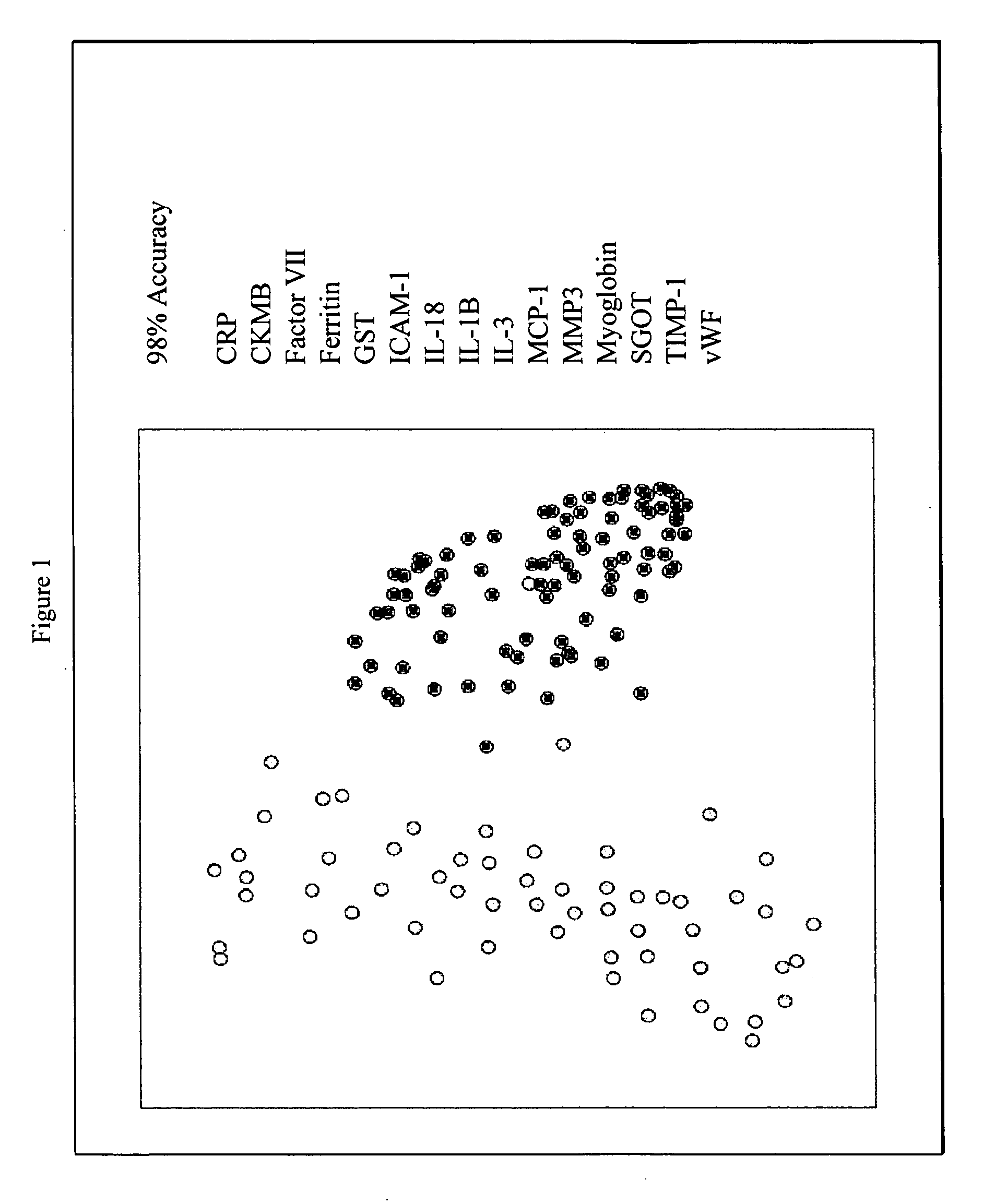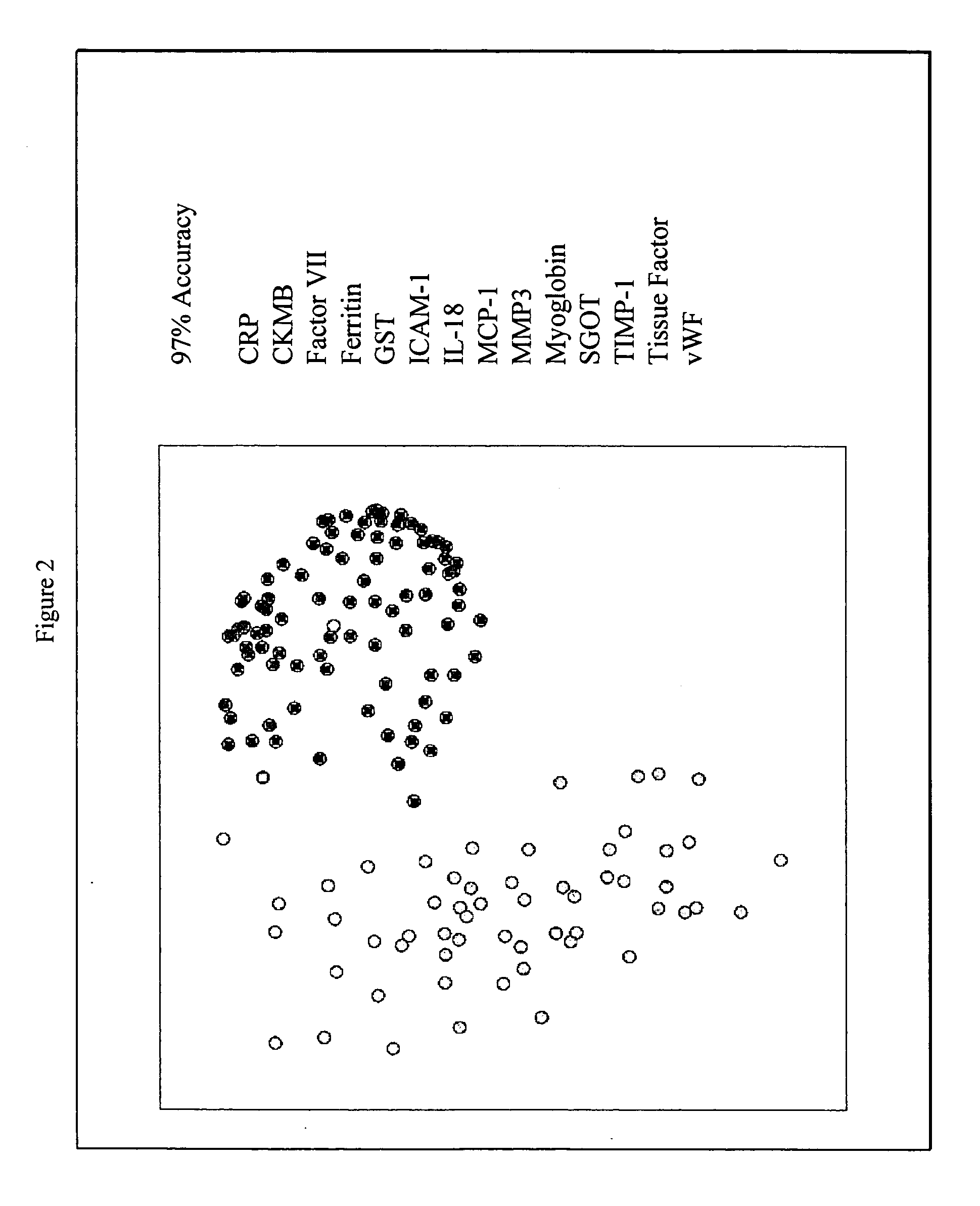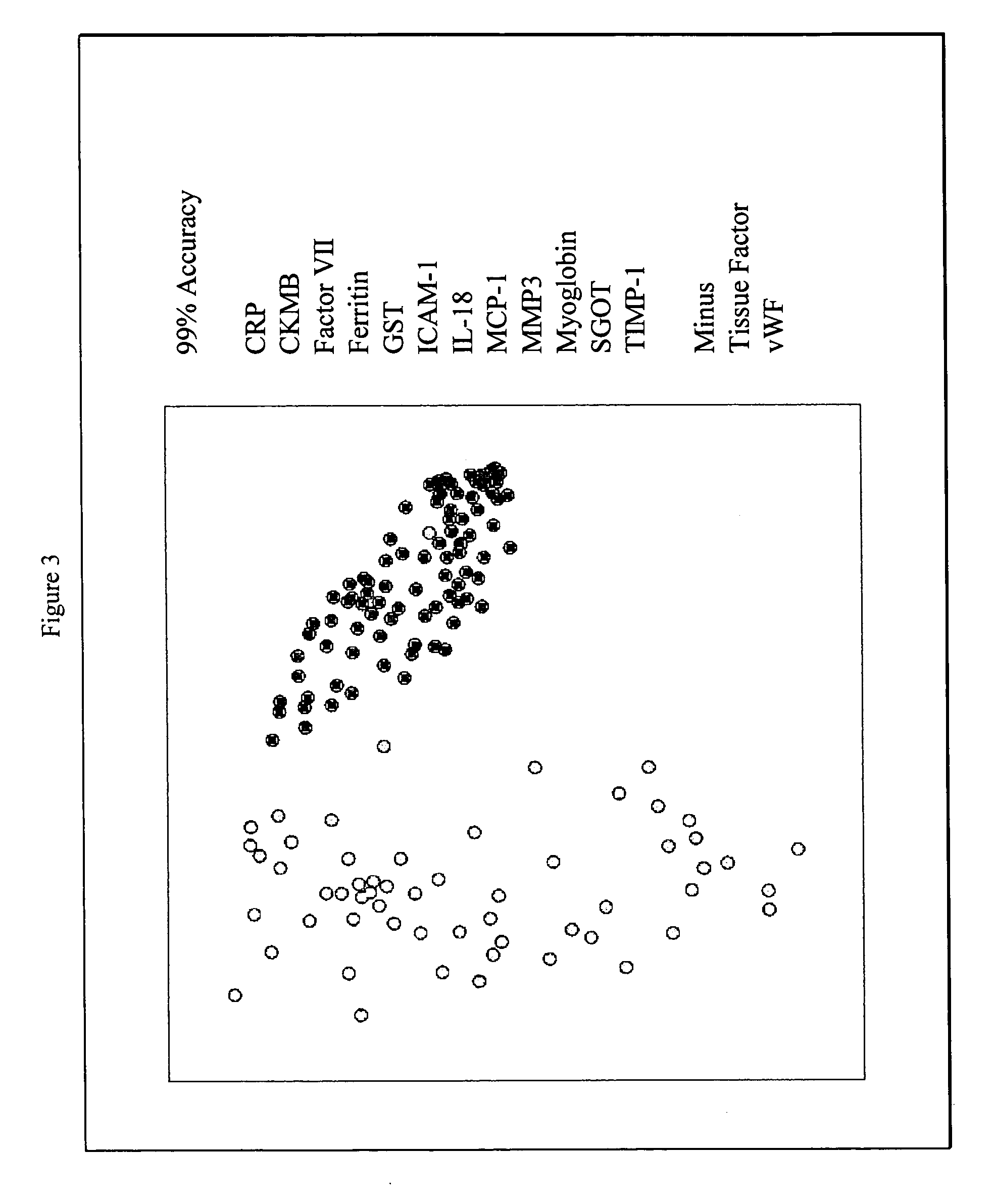Methods and kits for the diagnosis of acute coronary syndrome
a technology kits, applied in the field of methods and kits for the can solve the problems of insufficient selectivity and sensitivity of current assays for acute coronary syndrome, unfavorable frequency of false positives and false negatives, and inability to accurately diagnose acute coronary syndrome. , to achieve the effect of rapid detection and accurate diagnosis of acute coronary syndrom
- Summary
- Abstract
- Description
- Claims
- Application Information
AI Technical Summary
Benefits of technology
Problems solved by technology
Method used
Image
Examples
example i
[0049] Patient Population. The patient population was chosen based on an elevated level of CKMB and Troponin. Both of these enzymes were followed for each patient over time at a hospital until a conclusive diagnosis of ACS was made. The sample of blood, which was tested, was obtained on admission to the hospital. The normal or control patient population was chosen from a wellness clinic. These control patients had no indication of suffering from cardiovascular disease. Consent and blood specimens from all participants were obtained under IRB Protocol.
[0050] Collection and storage of blood specimens: Ten mL of peripheral blood was drawn from subjects using standardized phlebotomy procedures. Blood samples were collected without anticoagulant into two 5 mL red top vacutainers, sera were separated by centrifugation, and all specimens were immediately frozen and stored in the dedicated −80 C freezer. All blood samples were logged on the study computer to track information such as stora...
example ii
Development of LabMAP Assays for Circulating Antibodies
[0060] Assays were performed in filter-bottom 96-well microplates (Millipore). Purified antigens of interest were coupled to Luminex beads as described for antibodies. Antigen-coupled beads were pre-incubated with blocking buffer containing 4% BSA for 1 h at room temperature on microtiter shaker. Beads were then washed three times with washing buffer (PBS, 1% BSA, 0.05% Tween 20) using a vacuum manifold followed by incubation with 50 μL blood serum diluted 1:250 for 30 min at 4 C. This dilution was selected as an optimal for recovery of anti-IL-18 IgG based on previous serum titration (data not shown). Next, washing procedure was repeated as above and beads were incubated with 50 μL / well of 4 μg / mL PE-conjugated antibody raised against human IgG (Jackson Laboratories), for 45 min in the dark with the constant shaking. Wells were washed twice, assay buffer was added to each well and samples were analyzed using the Bio-Plex susp...
PUM
 Login to View More
Login to View More Abstract
Description
Claims
Application Information
 Login to View More
Login to View More - R&D
- Intellectual Property
- Life Sciences
- Materials
- Tech Scout
- Unparalleled Data Quality
- Higher Quality Content
- 60% Fewer Hallucinations
Browse by: Latest US Patents, China's latest patents, Technical Efficacy Thesaurus, Application Domain, Technology Topic, Popular Technical Reports.
© 2025 PatSnap. All rights reserved.Legal|Privacy policy|Modern Slavery Act Transparency Statement|Sitemap|About US| Contact US: help@patsnap.com



